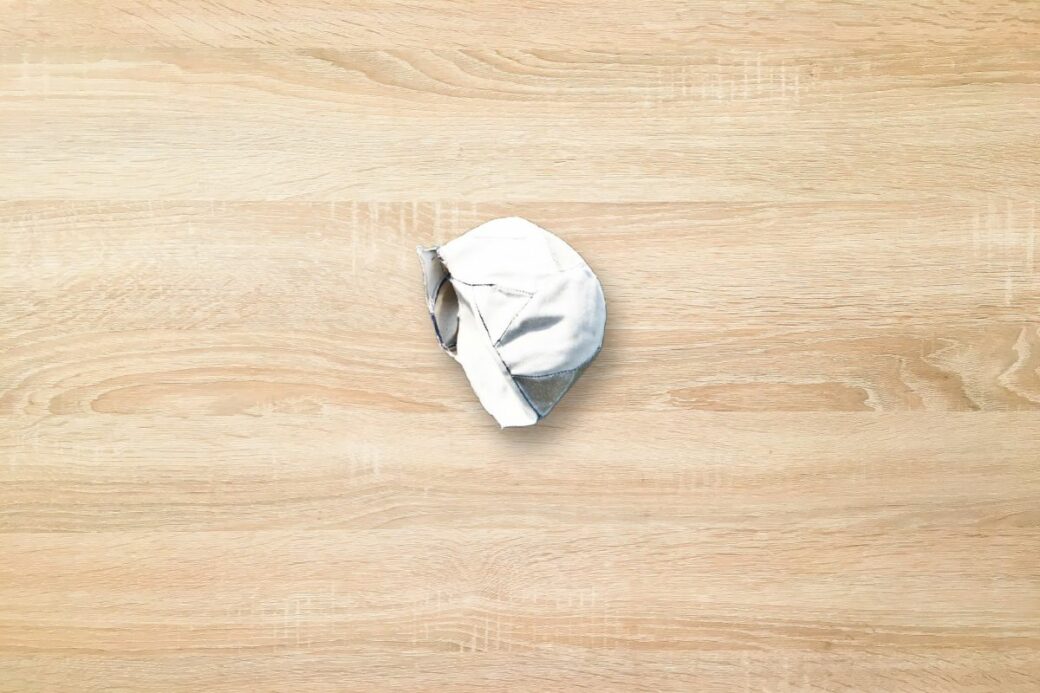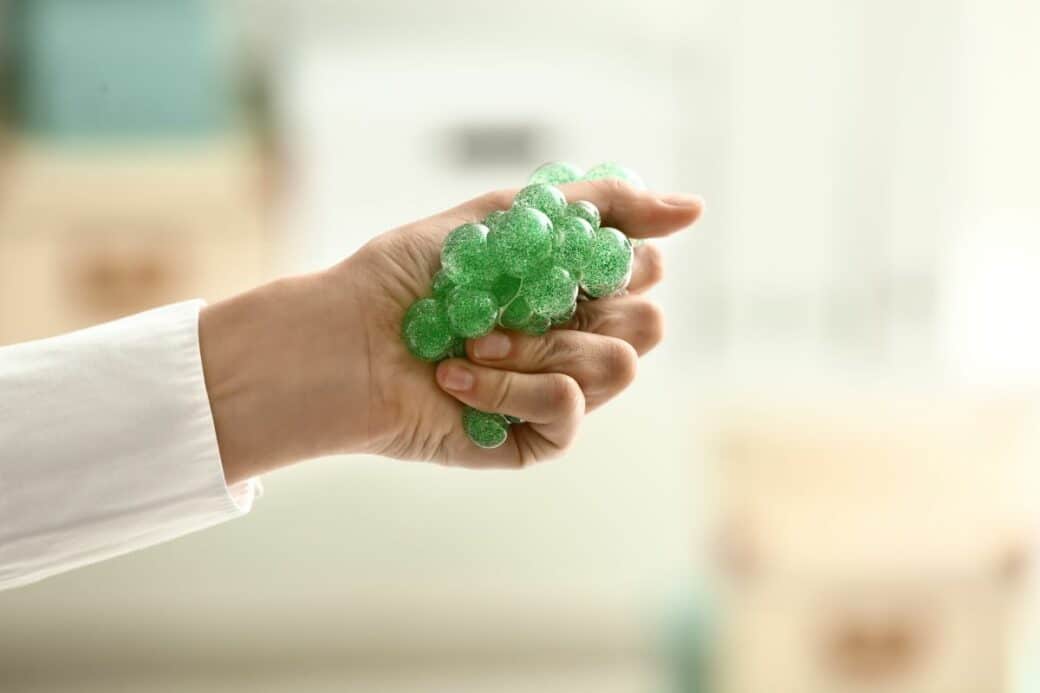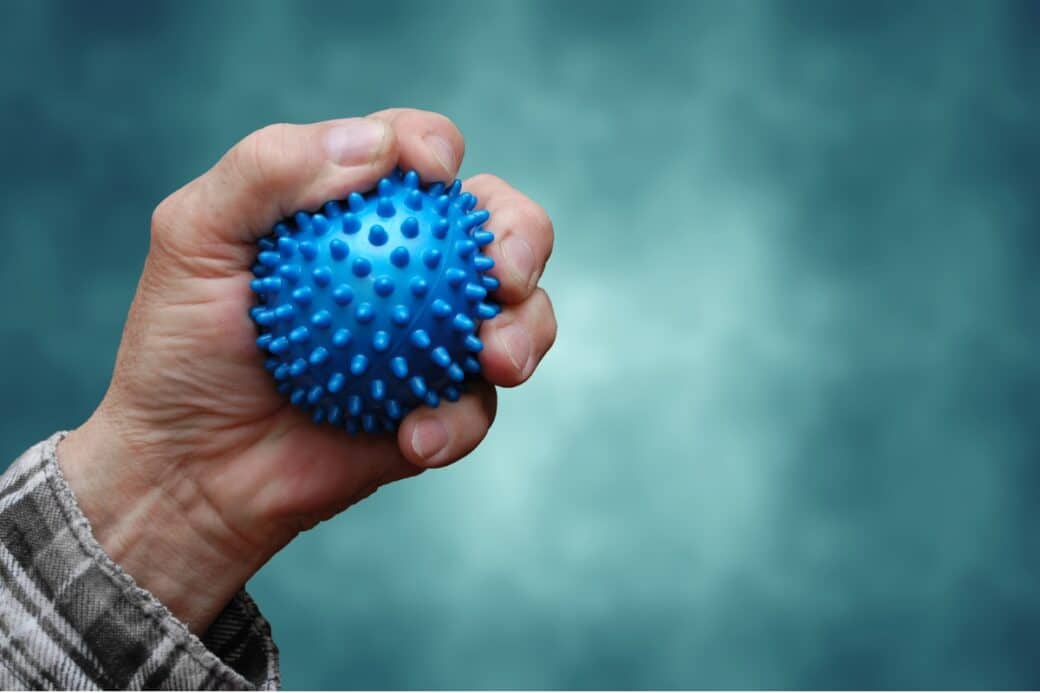Have you ever wondered if those squishy stress balls you love to squeeze can actually burst? In this article, we will explore the limits of stress balls and find out if they have the potential to pop. Whether you use them to release anxiety or simply for fun, knowing the limits of these popular stress relievers can help you enjoy them to the fullest. So, let’s dive in and uncover the truth about stress ball durability.

Can Stress Balls Pop: Understanding stress balls
Definition and history of stress balls
Stress balls are small, handheld objects that are designed to be squeezed or manipulated in the hand as a means of stress relief. They typically have a soft and pliable texture, making them satisfying to squeeze and providing a tactile sensation. Stress balls have been used for many years as tools for stress management, and their popularity continues to grow.
The history of stress balls dates back to ancient times when they were first used in China over 2,000 years ago. These early stress balls were made from materials such as stone, and they were believed to have therapeutic purposes. In more recent history, stress balls became popular in the 1980s and 1990s as a way to relieve stress and promote relaxation.
The purpose and benefits of stress balls
The primary purpose of stress balls is to provide a physical outlet for stress and tension. By squeezing and manipulating the ball, you can release built-up muscle tension and divert your attention away from stressors. This can help to reduce feelings of anxiety, promote relaxation, and improve overall well-being.
In addition to their stress-relieving benefits, stress balls also offer other advantages. They can improve hand and finger strength, enhance grip and dexterity, and help to reduce symptoms of repetitive strain injuries. Stress balls can also be used as a distraction tool, helping to redirect your focus and provide a sense of comfort during stressful situations.
Types of stress balls
Stress balls come in a variety of types, with each offering a unique sensory experience. Traditional stress balls are typically made from foam or rubber materials and have a smooth texture. They are readily available and come in various sizes, shapes, and colors.
Gel-filled stress balls are another popular option. These balls contain a squishy gel substance inside a flexible outer casing. The gel provides a different sensation when squeezed, and some individuals find it more satisfying than the traditional foam variety.
There are also stress balls that incorporate additional features, such as textured surfaces or aromatherapy elements. These variations aim to provide extra sensory stimulation and enhance the stress-relieving effects of the ball.
What is a stress ball made of?
Overview of common materials used in stress balls
Stress balls can be made from a range of materials, each with its own unique properties. The most common materials used in the production of stress balls include foam, rubber, and gel.
Foam stress balls are typically made from polyurethane foam. This material is known for its soft and pliable texture, making it ideal for stress relief. Foam stress balls are lightweight, durable, and can retain their shape well even after repeated squeezing.
Rubber stress balls are often made from natural or synthetic rubber. Like foam balls, rubber stress balls offer a soft and squishy texture that is satisfying to squeeze. Rubber balls are known for their resilience and can endure substantial pressure without losing their shape.
Gel-filled stress balls are made by encasing a gel substance within a flexible outer material, such as rubber or fabric. The gel provides a more fluid sensation when squeezed and can take on various shapes. Gel-filled balls are often transparent, allowing the user to see the gel inside.
The role of different materials in the durability of stress balls
The material used in a stress ball can significantly impact its durability. Foam stress balls, for example, are generally more durable than gel-filled balls. Foam can withstand repeated squeezing without losing its shape, and it is less prone to developing tears or cracks.
Rubber stress balls, on the other hand, offer a balance between durability and softness. While rubber is more resilient than foam, it can be susceptible to wear and tear if subjected to excessive force or sharp objects. Regular inspection and proper use can help prolong the life of rubber stress balls.
Gel-filled stress balls are the most vulnerable to damage due to their fluid nature. While the outer casing provides some protection, it is possible for the gel to leak or rupture if the ball is punctured or excessively squeezed. It’s important to handle gel-filled stress balls with care to prevent such incidents.
Can stress balls pop?
Physical limits of stress balls
Stress balls, especially those made of foam or rubber, have physical limits beyond which they can be damaged or destroyed. While stress balls do not have a specific popping point like balloons do, they can still reach a breaking point if subjected to excessive force.
The primary purpose of a stress ball is to absorb pressure and provide a satisfying sensation when squeezed. However, it is important to recognize that stress balls are not indestructible and can only withstand a certain level of force.
Factors that can cause a stress ball to pop
Several factors can contribute to a stress ball popping or becoming damaged. Excessive squeezing or bending of the ball can cause it to reach its breaking point and rupture or tear. Additionally, exposing the stress ball to sharp objects or rough surfaces can also lead to punctures or cuts in the material.
While stress balls are designed to be resilient, they are not immune to wear and tear. Over time, the material can become weakened, making it more susceptible to damage or rupturing. Factors such as the quality of the material, frequency of use, and maintenance practices also play a role in the likelihood of a stress ball popping.
Cases of stress ball popping incidents
While stress ball popping incidents are relatively rare, they do occur. There have been reports of stress balls bursting or leaking when subjected to excessive force or sharp objects. In some cases, individuals have sustained minor injuries when a stress ball ruptured unexpectedly. However, it is important to note that such incidents are uncommon and typically the result of extreme misuse or poor quality materials.
The science behind stress ball durability
The impact of external forces on stress balls
Stress balls, like any other object, are subject to external forces that can affect their durability. These forces include squeezing, bending, stretching, and impact. While stress balls are designed to withstand these forces to a certain extent, applying excessive or prolonged pressure can lead to damage or failure.
Squeezing a stress ball repeatedly puts the material under stress, causing it to compress and deform. If the pressure is too great or sustained for too long, the stress ball may lose its shape or rupture. Bending or stretching a stress ball beyond its limits can also cause it to tear, especially if the material has weakened over time.
Additionally, dropping or throwing a stress ball on a hard surface can result in impact that can damage or break the ball. It is important to handle stress balls with care and avoid subjecting them to excessive force or rough treatment.
The relationship between stress ball material and its ability to withstand pressure
The material used in a stress ball plays a crucial role in its ability to withstand pressure. Foam stress balls, for example, are designed to absorb and distribute pressure evenly. The structure of the foam allows it to compress and regain its shape after being squeezed, making it well-suited for repeated use.
Rubber stress balls are also capable of withstanding a significant amount of pressure. Rubber has elastic properties that allow it to deform under pressure and then return to its original shape. This flexibility enables rubber stress balls to endure repeated squeezing without losing their form.
Gel-filled stress balls, however, are more vulnerable to pressure damage. The gel inside the ball can move and displace when subjected to force, potentially causing the outer casing to stretch or rupture. While gel-filled stress balls can withstand moderate pressure, excessive squeezing or impact can lead to leaks or bursts.
Studies conducted on the strength of stress balls
Several studies have been conducted to evaluate the strength and durability of stress balls. These studies aim to understand the physical limits of different stress ball materials and provide insights into their performance under various conditions.
One study published in the Journal of Physical Therapy Science examined the durability of foam stress balls by subjecting them to repeated compressions. The study found that foam stress balls maintained their shape and firmness even after 5,000 compressions, indicating their long-lasting durability.
Another study published in Materials Science and Engineering also investigated the durability of stress balls, focusing on the impact resistance of different materials. The study found that rubber stress balls exhibited high impact resistance and could endure significant shock without breaking or deforming.
While these studies provide valuable information about stress ball durability, it’s important to note that individual results may vary depending on factors such as material quality, manufacturing techniques, and user behavior.
Factors affecting the life of a stress ball
Effect of frequent use on a stress ball’s durability
The more frequently a stress ball is used, the greater the wear and tear it will experience over time. Continuous squeezing and manipulation of the ball can gradually weaken the material, making it more prone to damage or failure.
However, the durability of a stress ball also depends on the quality of the material and the manufacturing process. Higher-quality stress balls are often designed to withstand prolonged use and maintain their shape and integrity for longer periods.
To extend the life of a stress ball, it is important to use it in moderation and avoid excessive force. Taking breaks between squeezing sessions and alternating between different stress-relief methods can help reduce the strain on a single stress ball.
Impact of squeezing technique on the longevity of the ball
The way you squeeze a stress ball can also affect its durability. Squeezing the ball too hard or aggressively can put excessive pressure on the material and cause it to deform or rupture.
It is advisable to squeeze a stress ball with a gentle and controlled grip. Applying even pressure throughout the ball and releasing it slowly can help prolong its life. Avoid squeezing the ball with sharp or pointed objects, as these can cause punctures or cuts in the material.
The role of maintenance and care in extending stress ball life
Proper maintenance and care can significantly extend the life of a stress ball. Regularly inspecting the ball for signs of wear and tear, such as cracks or tears, and addressing them promptly can prevent further damage.
Cleaning the stress ball regularly can also help maintain its integrity. Use a mild soap and water solution to gently clean the ball, and allow it to air dry completely before using it again. Avoid exposing the stress ball to harsh chemicals or excessive heat, as these can degrade the material.
Storing the stress ball in a cool and dry place when not in use can also help preserve its quality. Avoid leaving the stress ball in direct sunlight or in a hot car, as extreme temperatures can cause the material to degrade or lose its shape.
Signs that your stress ball is about to pop
Visible signs of wear and tear
One of the most apparent signs that a stress ball is nearing its breaking point is visible wear and tear. Look for cracks or tears in the material, especially along the seams or areas that are subjected to the most pressure. If you notice any signs of damage, it is best to replace the stress ball to prevent a potential rupture or leak.
Changes in texture and shape
As a stress ball ages, it may undergo changes in texture and shape that can indicate it is becoming less durable. The material may become less firm or more easily deformable, suggesting that it is losing its structural integrity. If the ball no longer maintains its original shape or does not provide the desired tactile sensation, it may be time to replace it.
Leaking or deflating issues
For gel-filled stress balls, leaking or deflating can be a clear indication that the ball is about to pop. If you notice any fluid leaking from the ball or if it does not hold its shape as it should, it is important to stop using the ball immediately. Continuing to use a damaged gel-filled stress ball can pose a safety risk and potentially lead to further damage.
How to take care of your stress ball
Tips on handling stress balls
Proper handling of stress balls can help prolong their lifespan and ensure their effectiveness as stress-relief tools. Here are some tips to keep in mind when using stress balls:
- Avoid using excessive force: Squeeze the ball with a gentle and controlled grip, rather than squeezing it too hard.
- Take breaks between squeezing sessions: Allow the stress ball to recover its shape and take breaks to avoid excessive wear and tear.
- Alternate between stress-relief methods: Instead of relying solely on a stress ball, incorporate other stress-relief techniques to reduce strain on a single ball.
Cleaning and storage recommendations
To keep your stress ball clean and in good condition, follow these cleaning and storage recommendations:
- Clean the stress ball regularly: Use a mild soap and water solution to gently clean the ball, and rinse thoroughly. Allow it to air dry completely before using it again.
- Avoid harsh chemicals: Do not use harsh cleaning agents or solvents, as they can degrade the material and affect the ball’s durability.
- Store in a cool and dry place: Keep the stress ball in a cool and dry place when not in use to prevent exposure to extreme temperatures or moisture.
Common mistakes to avoid while using stress balls
To ensure the longevity and effectiveness of your stress ball, avoid the following common mistakes:
- Using excessive force: Squeezing the ball too hard or aggressively can cause damage or shorten its lifespan.
- Subjecting the ball to sharp objects or rough surfaces: Be mindful of the surroundings and avoid placing the stress ball on sharp or rough surfaces that can puncture or tear the material.
- Overusing a single stress ball: Rotate between multiple stress balls or different stress-relief methods to avoid excessive wear and tear on a single ball.
Alternatives to traditional stress balls
Usage of electronic stress relievers
In addition to traditional stress balls, electronic stress relievers have gained popularity as an alternative method of stress relief. These devices typically use vibration, heat, or pressure to provide a tactile and soothing sensation.
Electronic stress relievers often come in compact and handheld designs, making them convenient for on-the-go stress relief. They can provide a different sensory experience compared to traditional stress balls and may be particularly beneficial for individuals who prefer technological solutions or require specific types of stimulation.
Benefits of mindfulness and meditation
While stress balls offer a physical means of stress relief, practicing mindfulness and meditation can provide significant mental and emotional benefits. Mindfulness involves being fully present in the moment and accepting one’s thoughts and feelings without judgment.
Incorporating mindfulness and meditation into your stress relief routine can help reduce stress levels in the long term. These practices promote relaxation, improve mental focus, and enhance overall well-being. They can be used in conjunction with stress balls or as standalone techniques for stress management.
Stress-relief toys and gadgets
In addition to stress balls, there is a wide range of stress-relief toys and gadgets available on the market. These include fidget spinners, stress-relief cubes, and tactile sensory toys.
Fidget spinners, for example, are small device-like toys that can be rotated between the fingers. They provide a sensory experience similar to stress balls but offer a different method of engagement. Stress-relief cubes feature various buttons, switches, and dials that can be manipulated to provide sensory stimulation.
Choosing an alternative stress-relief toy or gadget depends on personal preferences and the desired sensory experience. Experimenting with different options can help individuals find the most effective tool for their stress management needs.
The future of stress balls
Emerging trends in stress relief toys
As stress management continues to gain importance in daily life, the demand for stress relief toys is expected to grow. Manufacturers are constantly innovating and introducing new products to meet the evolving needs and preferences of individuals seeking stress relief.
Some emerging trends in stress relief toys include the incorporation of smart technology, such as sensors and connectivity features. These advancements can enhance the interactive and customizable aspects of stress relief toys, providing users with personalized stress management experiences.
Sustainable and eco-friendly materials are also becoming increasingly popular in stress relief toy production. As environmental consciousness grows, manufacturers are exploring materials that are both durable and environmentally responsible, ensuring a reduced carbon footprint.
Technological advancements in stress ball design
Technological advancements have also influenced the design and functionality of stress balls. Recent developments include stress balls with built-in sensors that can detect and measure the level of pressure applied. These intelligent stress balls provide users with real-time feedback, allowing them to monitor and adjust their stress relief techniques.
Other advancements include stress balls equipped with adjustable levels of firmness or resistance. This allows users to customize their stress relief experience and tailor the ball’s performance to their preferences.
The impact of societal stress levels on the stress ball industry
The stress ball industry is closely tied to societal stress levels. As stress and anxiety continue to be prevalent issues in modern society, the demand for stress relief tools like stress balls is expected to rise.
The growing awareness and importance placed on mental health and well-being have contributed to an increased interest in stress management techniques. As a result, stress ball manufacturers are likely to see an expansion in their customer base and potentially greater investment in research and development.
It is anticipated that stress ball designs will evolve to meet the specific needs of different user groups, such as children, athletes, or individuals with specific medical conditions. Furthermore, the stress ball industry may develop partnerships with healthcare professionals to better understand and address the stress relief needs of individuals.
Parting thoughts on the limits of stress balls
The symbolic significance of a popping stress ball
A popping stress ball can carry symbolic significance for individuals experiencing high levels of stress. The burst of a stress ball can represent the release of accumulated tension and the culmination of overwhelming stress. It serves as a reminder of the need to find effective and sustainable stress relief methods.
While a popping stress ball can be discouraging, it is important to remember that stress relief is a continuous journey. Exploring diverse stress-relief methods and finding what works best for you can lead to better overall well-being and long-term stress management.
The importance of understanding the physical limits of stress balls
Understanding the physical limits of stress balls is essential for their safe and effective use. Recognizing that stress balls can only endure a certain level of pressure can help prevent accidents, injuries, and disappointments caused by misuse or unrealistic expectations.
By respecting the physical limits of stress balls, individuals can make informed choices when selecting stress relief tools and apply them appropriately. This knowledge empowers individuals to explore a variety of stress-relief methods and customize their approach to suit their unique needs.
Encouragement to practice diverse stress-relief methods
While stress balls can be valuable tools for stress relief, it is important to remember that they are just one piece of the puzzle. Stress management is a multifaceted process that requires a holistic approach.
To effectively manage stress, it is beneficial to incorporate a variety of stress-relief methods, such as mindfulness, meditation, physical exercise, and social support. Diversifying stress-relief practices can help individuals build a comprehensive toolkit of strategies tailored to their specific needs and preferences.
By exploring a range of stress relief methods, individuals can discover what works best for them and develop a well-rounded approach to stress management. Stress balls can be a valuable part of this toolkit, offering a tangible and satisfying means of stress relief, but they should not be relied upon exclusively.
In conclusion, stress balls are versatile tools that can provide significant benefits in stress management. Understanding their construction, durability, and limitations is crucial for maximizing their effectiveness and safety. By incorporating stress balls into a diverse stress-relief routine, individuals can enhance their overall well-being and build resilience in the face of daily stressors.




